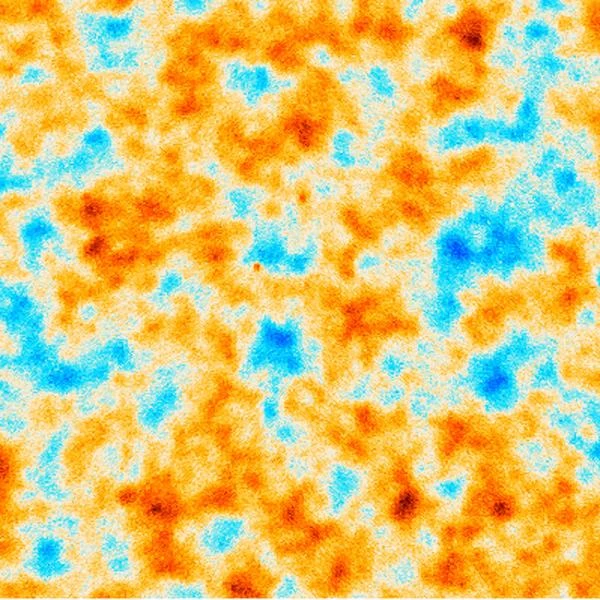
Recombination is the era when, about 380,000 years after the Big Bang, the temperature of the Universe dropped below 3000 K. Free electrons were then able to bind to proton nuclei to form neutral hydrogen atoms. This process allowed photons, previously trapped in an opaque plasma, to travel freely: the Universe became transparent.
N.B.:
Neutral hydrogen refers to a hydrogen atom whose proton is bound to an electron, without being ionized. This gas, denoted H I, is the dominant constituent of the Universe after recombination. Its abundance and distribution can be studied using the so-called "21 cm" emission, resulting from a hyperfine transition of the electron in the ground state. Not to be confused with the Lyman-α line (121.6 nm), which corresponds to an electronic transition between levels \(n=2\) and \(n=1\).
This moment marked the release of the cosmic microwave background (CMB), first observed by Arno Penzias (1933-2024) and Robert Wilson (1936-) in 1965. Recombination was not instantaneous but gradual, spread over several tens of thousands of years.
Recombination now allows us to probe the young Universe. The small temperature fluctuations in the CMB, measured by the COBE, WMAP, and Planck satellites, are directly related to the anisotropies present at that time. They provide a wealth of information about the density of matter, the geometry of the Universe, and the initial conditions for galaxy formation.
N.B.:
The anisotropies of the cosmic microwave background refer to the tiny temperature variations (≈ 10-5) observed in the fossil radiation. They reflect local differences in density and velocity in the primordial plasma before recombination. These inhomogeneities served as gravitational seeds for the formation of galaxies and large-scale structures. Their precise mapping constitutes one of the finest pieces of evidence for the Big Bang model.
| Event | Period (time after Big Bang) | Physical Consequence | Comment |
|---|---|---|---|
| Formation of hydrogen atoms | ≈ 380,000 years | Neutralization of plasma | Electrons bind to protons |
| Decoupling of photons | ≈ 380,000 - 400,000 years | Light free to travel | Origin of the cosmic microwave background |
| Observation of CMB by COBE | 1992 (COBE satellite) | Detection of anisotropies | Confirmation of the Big Bang theory |
| High-precision mapping | 2003 (WMAP), 2009-2013 (Planck) | Precise measurement of fluctuations | Most precise cosmological data to date |
Sources: Saha, Physical Review 1931, Penzias & Wilson, ApJ 1965, NASA COBE mission, ESA Planck mission.